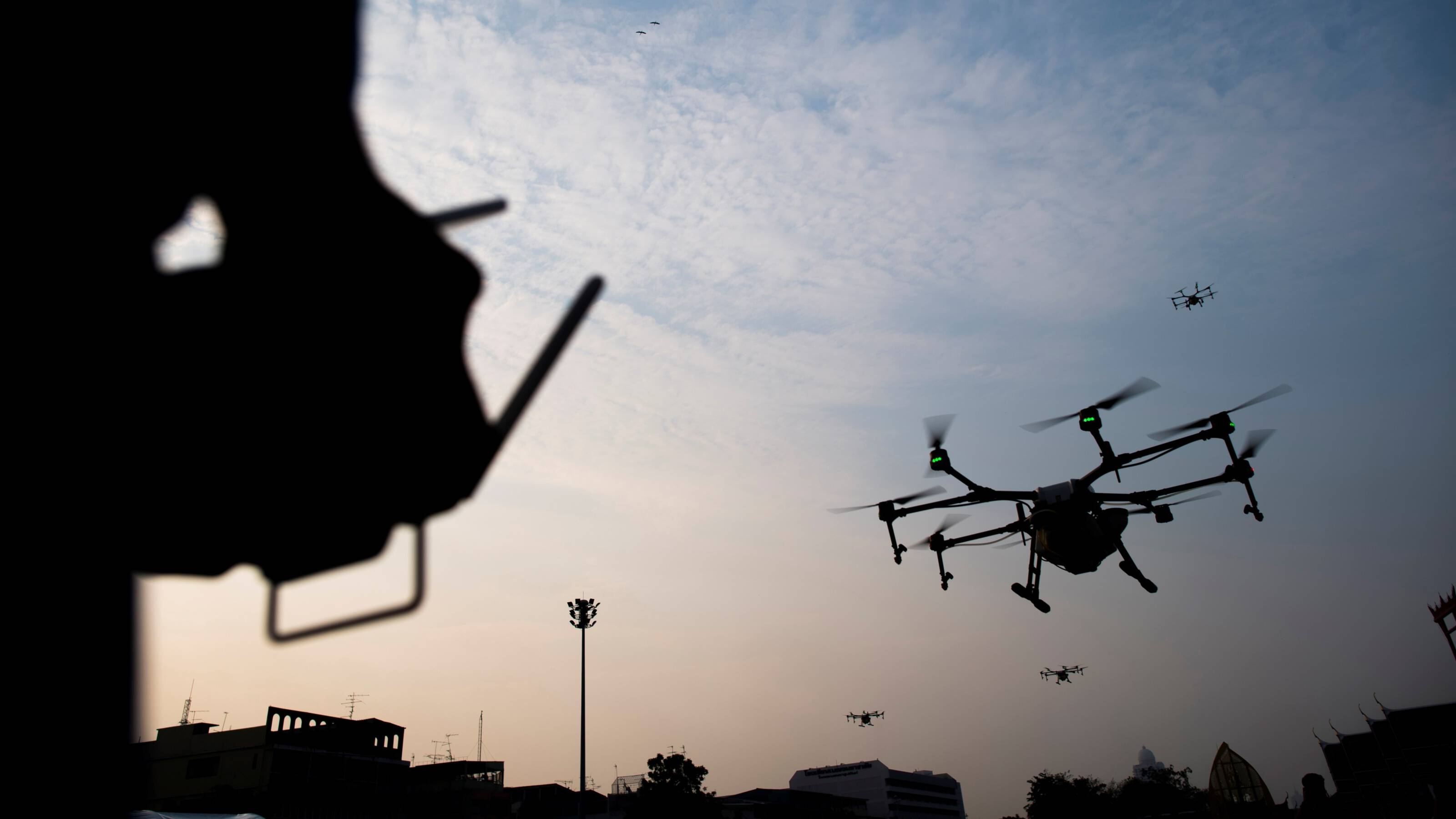
CIMMYT researcher Gerald Blasch and EIAR research partners Tamrat Negash, Girma Mamo and Tadesse Anberbir (right to left) conduct field work in Ethiopia. While still in the experimental stages, the technology is showing promising results so far. Meanwhile, in collaboration with the Federal University of Technology, based in Parana, Brazil, CIMMYT scientists have been testing deep learning algorithms - computer algorithms that adjust to, or “learn” from new data and perform better over time - to automate the assessment of leaf disease severity. The results of these experiments will be published later this year. Scientists have had similar success with other common foliar wheat diseases, Septoria and Spot Blotch with remote sensing experiments undertaken at experimental stations across Mexico. Digital imaging has also shown great potential for evaluating damage to maize cobs by fall armyworm. By analyzing drone imagery, scientists can make more objective disease severity assessments and accelerate the development of improved, disease-resistant maize varieties.

(Graphic: CIMMYT)Īdvancing assessment of pests and diseasesĬIMMYT scientists and their research partners have advanced the assessment of Tar Spot Complex - a major maize disease found in Central and South America - and Maize Streak Virus (MSV) disease, found in sub-Saharan Africa, using drone-based imaging approach.
RUST DRONE STATION TRIAL
A map shows drone-based plant height estimates from a maize line trial in Muzarabani, Zimbabwe. Recent work on maize has shown that drone-based plant height assessment is also accurate enough to be used in maize improvement and results are expected to be published next year. They also found that by using drones with real-time kinematic (RTK) systems onboard, users could eliminate the need for ground control points, increasing the drones’ mapping capability. The team found that plant height estimates from drones were similar in accuracy to measurements made from the ground. The research team, which included scientists from CIMMYT, the Federal University of Viçosa and KWS Momont Recherche, measured and compared wheat crops at four growth stages using ground-based measurements and drone-based estimates. Measuring plant height with high-powered dronesĪ recent study, published in Frontiers in Plant Science validated the use of drones to estimate the plant height of wheat crops at different growth stages.

An aerial view of the Global Wheat Program experimental station in Ciudad Obregón, Sonora, Mexico (Photo: Francisco Pinto/CIMMYT)

Here are some of the latest developments from our team of remote sensing experts. These plant traits assessed at plot trials can also be scaled out to farmers’ fields using satellite imagery data and integrated into decision support systems for scientists, farmers and decision-makers. By analyzing imagery taken using tools like drones, scientists can quickly and accurately assess small crop plots from large trials, making crop improvement more scalable and cost-effective. However, ground-based measurements can be time-consuming and labor-intensive. Scientists at the International Maize and Wheat Improvement Center (CIMMYT) have been harnessing the power of drones and other remote sensing tools to accelerate crop improvement, monitor harmful crop pests and diseases, and automate the detection of land boundaries for farmers.Ī crucial step in crop improvement is phenotyping, which traditionally involves breeders walking through plots and visually assessing each plant for desired traits.


 0 kommentar(er)
0 kommentar(er)
